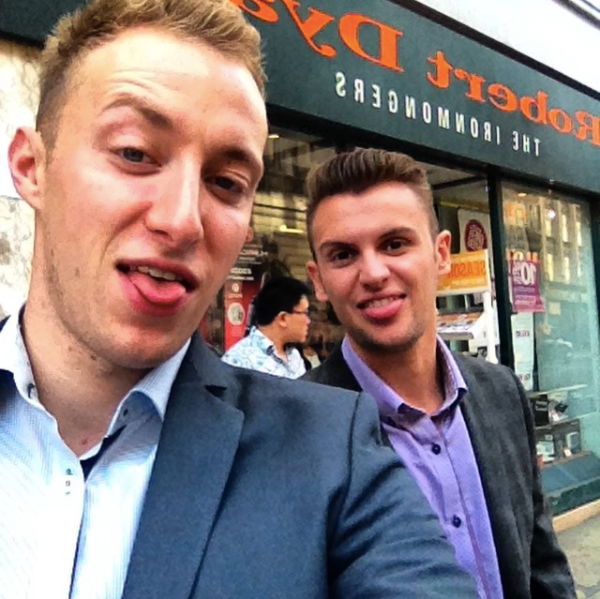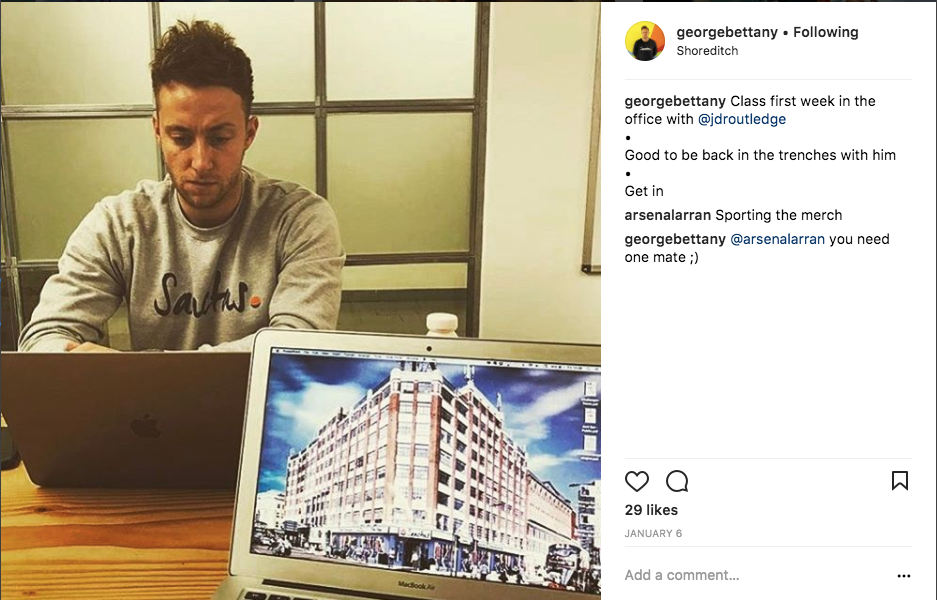Getting to profitability
It was January 2017, we had £95,000 in the bank and the plan was to get to profitability and stay there.
George and I drafted up a very simple financial plan which projected us getting to £10k monthly recurring revenue within 12 months.
£10k a month was above profitable for us. Two london salaries, a few subscriptions and desk space in Shoreditch — £10k monthly revenue would be comfortably profitable, if we could get there.
There’s always been something more than the numbers in profitability to me though. We felt like we owed it to ourselves to prove that we could do it. In our last business together we’d scaled up costs very quickly with no clear path to revenue, never mind profitability. In that business we’d outsourced everything early on and we’d been lavish — we outsourced the accounts, the legals and we hired our problems away.

With a clear goal of £10k monthly revenue we were adamant that we’d achieve it alone; “just the two of us”. Post investment round, I did the legals using a borrowed investment agreement and some favours, I created the share certificates and I also submitted the SEIS forms for our investors. George, on the other hand, had his head in xero for the first time and was busy figuring out how VAT returns actually work.
There were plenty of examples of this over the first 6 months of 2017, we did it all ourselves if we could, no outsourcing and no unnecessary spending. We wanted to do it all, to learn it all and in many ways repent for the sinful way in which we’d built our last business.
We paid ourselves well though, whilst we were willing to get our hands dirty in the accounts and hack things together, we didn’t believe we should do that at the detriment of our own personal lives. We didn’t want to have to constantly worry about money or live in dingy flats, although I’m sure if we ever needed to, we’d have dropped down our salaries in a heartbeat.
Fortunately, our model is very simple and required no other costs. Our partners paid for Sanctus and we paid our coaches a set day-rate when we worked with a business. Therefore, we only paid a coach when we got paid, no other upfront costs.
We made our own roles and responsibilities clear; James — content, community, brand. George — partner relations, new business, operations. Communicating these clearly was great, it was great for both of us, because we knew what one did and the other didn’t, but it was also great for everyone around us.
From then on, we went to work. I fired out content like a machine gun from the hip, with little thought nor strategy. We screamed about Sanctus and mental health from the tops of our voices, using every single social platform; both personally and through the Sanctus account. I didn’t say no to a speaking or PR opportunity no matter how small it was, we just did everything we could to talk loudly about the Sanctus mission.

From the machine gun social content approach, businesses approached us and George took it from there. New business meetings, sending over proposals, agreeing terms and then making it all actually happen. George was shaking hands on the initial meeting, onboarding the business with the new coach and then sending over the invoice when he finally sat down at his desk.
The e-mails kept landing in our inboxes, subject title; “Interested” and we took the meetings. We took a lot of meetings. We were charging around London meeting businesses of all shapes and sizes, plus popping into see existing partners too. We never pitched once and we were armed with no sales deck, proposals or business cards. We just told our story up until the present day with as much honesty as we could. I think our favourite line to use in a meeting became; “We don’t actually know yet!”
No fake or bullshit, just straight up honesty. This is where we are at right now and if we’re too small for you, if we’re too big a risk right now, that’s cool. We never ever tried to act bigger than we were, in fact we’d proudly say — “It’s just us and a few coaches”
New partners joined, whilst we obsessed over making our current partners happy, so the monthly revenue ticked upwards.
We even managed to get some great PR. In the first two months of the year we had a double page spread in The Times and we were interviewed on BBC World News. Needless to say, we spent nothing on that PR, it all came to us.

Mid way through May we dragged our heads above water and came up for a bit of air. George tapped me on the shoulder and showed me the numbers we were due to do in June. We were going to be profitable, we’d done it.
We’d both always dreamed of owning a profitable business and in that tap on the shoulder, we’d done it. There were no booths in London nightclubs or bottles of Dom Perrignon. We both just smiled and said “get in”.
In January we had 5 partners doing 5 coaching days per month.
In June we were due to do 23.5 coaching days in the month with 14 partners, which would make us profitable, just. We’d quadrupled monthly revenues in just under 6 months.
Profitability isn’t as glamorous as multi million dollar investment rounds and hyper growth. It’s real, it’s gritty and it leaves you with an exhausted sense of satisfaction.

It’s not a silver bullet though either, immediately we were worrying about keeping all of our partners happy and how we were going to grow to the next stage. Yet we did grow in confidence and we were more sure footed when we decided to take our next steps forward.
What’s more, being profitable feels good for our mental health. We’re in control of our own destiny and we have the freedom to make our own choices.
Growing profitably and sustainably doesn’t mean we’re not ambitious and for anyone who follows us, they’ll know we aspire to be as big as Nike for mental health.
We’ll ‘just do it’ at our own pace.


